Grow These 9 Plants Near Your Bird Bath – For Year Round Color & Support for Birdy Friends
You can greatly increase the chances of enjoying birdy activity in your garden by planting the right flowers, plants and shrubs – here are 9 key bird bath plants to grow

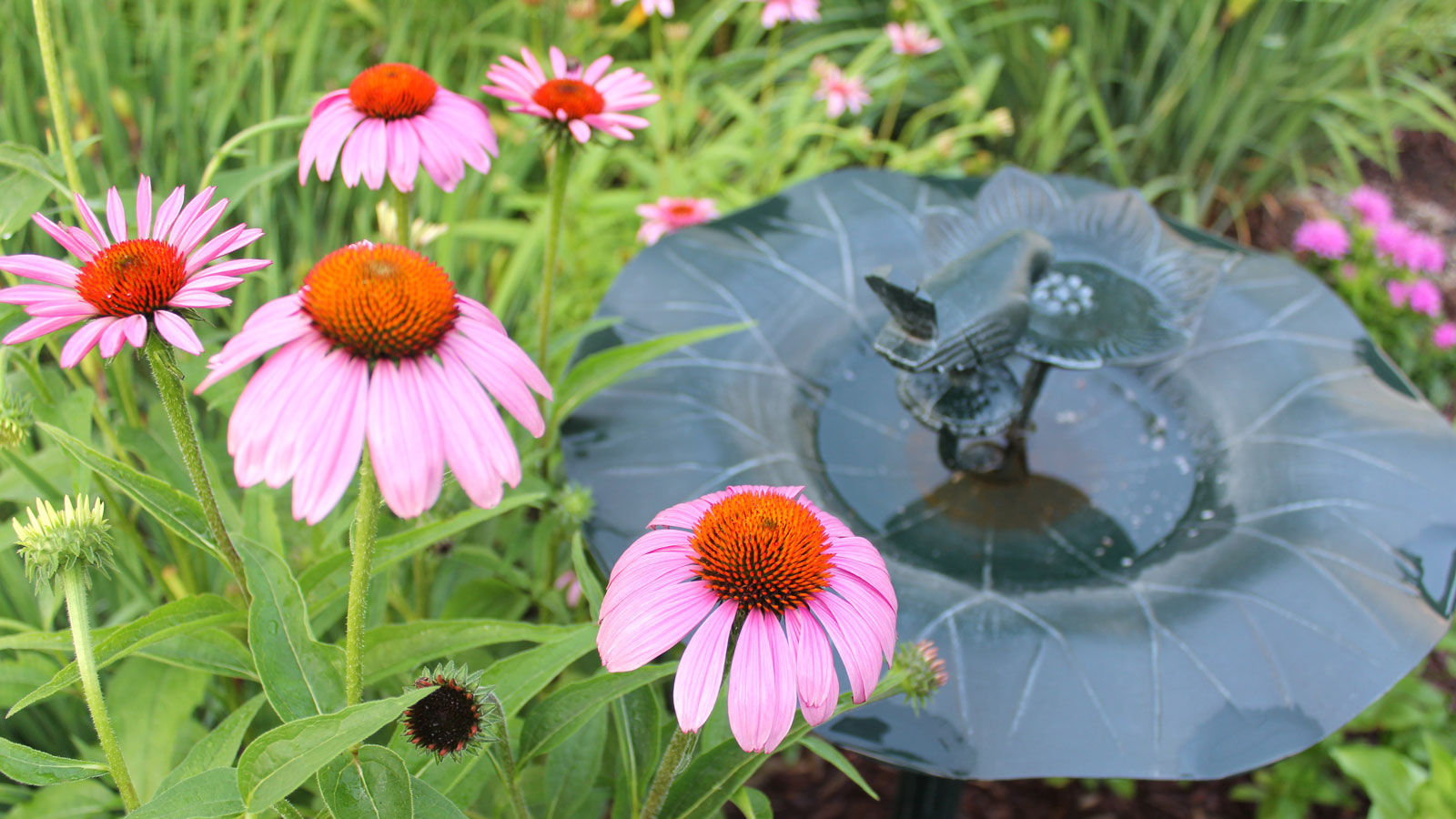
The charms associated with a well placed and well kept bird bath are unparalleled. Whether you opt for a traditional standing stone bath for your lawn or a modern metal bowl that clips onto a balcony, the right bird bath affords you a charming and candid glimpse of wildlife infused with joy – and purpose. But did you know that planting the right bird bath plants around your main watering feature can greatly enhance the appeal for your feathered friends?
A well appointed selection of flowers, perennials and shrubs around your bird bath can attract birds for all the right reasons. It can bolster natural food reserves, increase a sense of privacy and security, and provide shelter and roosting opportunities for your bird buddies. Coupled with the promise of hydration and the chance to clean and play, the right blend of plants can create a veritable wildlife sanctuary that puts all a bird’s needs together in an irresistible way.
All that, and these plant selections can also add impact, harmony and multi-seasonal interest in the form of floral color, mixed foliage, and even berries. Here are 9 gorgeous plants for bird bath appeal that’s sure to win over a legion of lovely visitors.
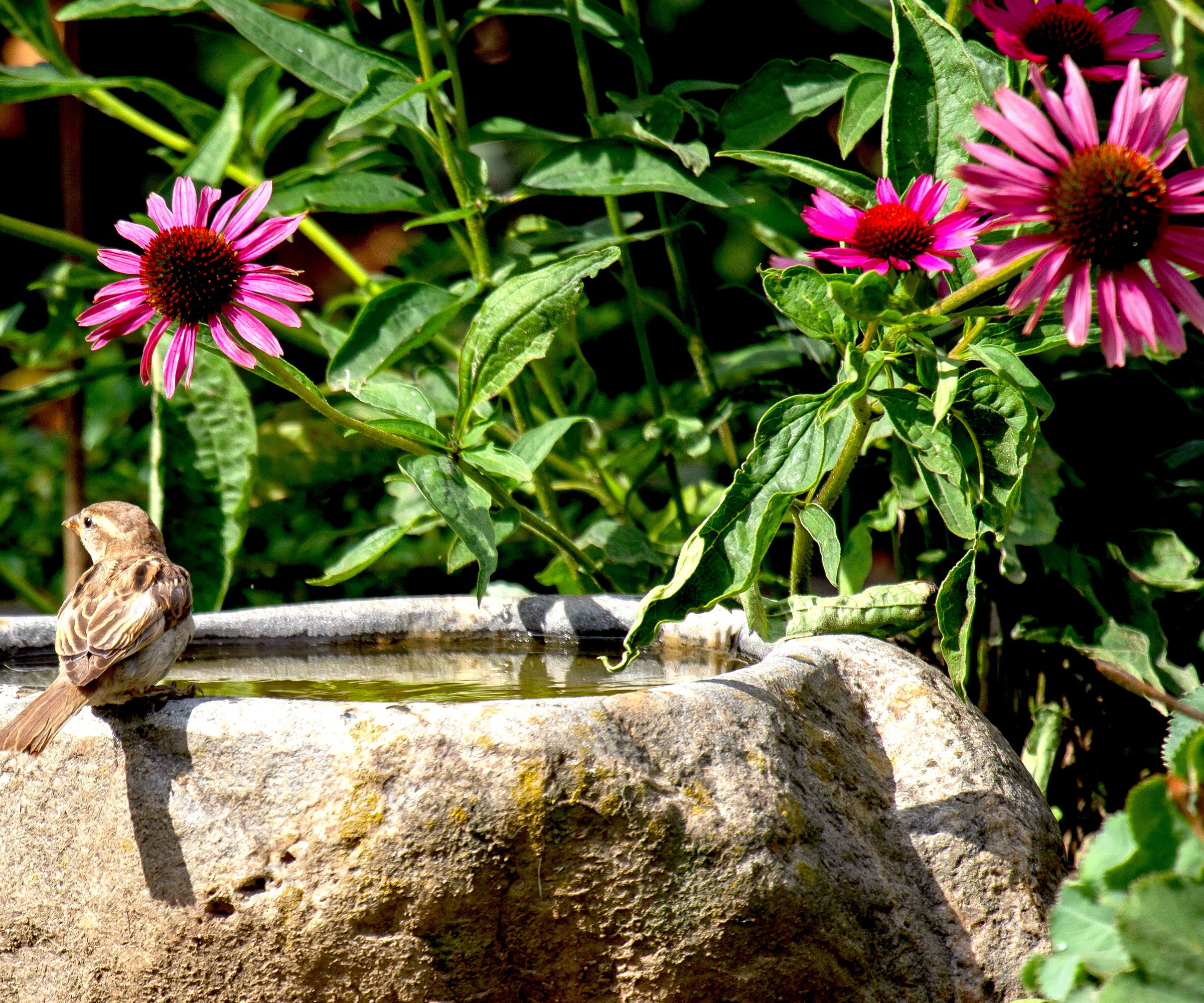
Grow Bird Bath Plants for Food and Shelter
It’s understandable to spend time selecting a bird bath that fits the overall feel, size and demands of your garden. In order to increase the chances of getting birds flocking to your yard, it’s also important not to rush the process of choosing the right location for your bird bath, and not to make mistakes about the upkeep of the bath. But if you’re searching for enticements to give birds reassurance, protection, extra food sources and shelter, the right plants, flowers, perennials and shrubs can transform a quiet bathing spot into a welcoming haven for your feathered friends.
Planting around a bird bath not only sets a scene and adds a wealth of natural color – it also heightens a sense of calm and reassurance for visiting songbirds and hummingbirds, bringing them key comforts and making them feel more attune to the space. Well appointed trees and shrubs can be used for carefully placed feeders to complement the bird bath, further increasing your chances of enjoying a thriving bird community in a well-rounded habitat.
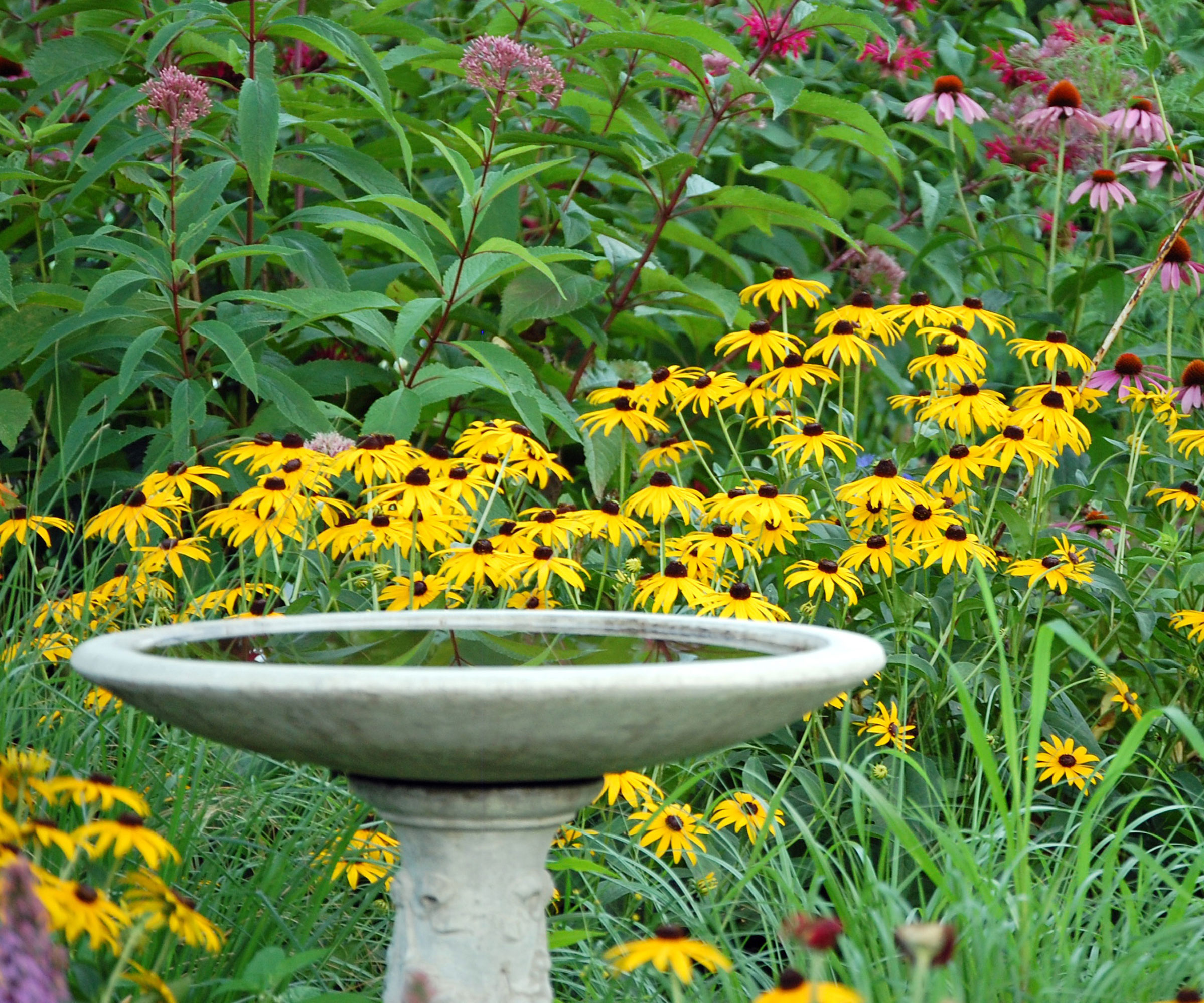
When choosing plants in a bird bath situation, of course you need to think about the types of birds you want to see, the space available, your USDA zone, and the quality of soil. Ideally, you need to include a mix of plants and flowers for nectar and seeds, plus flowering and berrying shrubs. Plant specifically for flowers, fruit, seeds, and shelter, and you can be sure of attracting the widest range of garden guests.
A good bird bath flower planter will benefit from having nectar-rich tubular flowers for hummingbirds placed nearby. It will also feature plants that produce seedheads for birds in search of food as the weather turns cooler. You may have been growing sunflowers for seedheads, but your bird bath will be enhanced with bird-friendly shrubs and plants that cater to their needs across the tougher months of the year.
This means factoring in plants for berries in fall and winter to keep the likes of cardinals, waxwings and woodpeckers well fed. Elderberries, serviceberries, chokeberries and dogwoods are all lovely options, in addition to those listed below. And don’t forget plants for shelter and rest, which help frame a safe and stimulating space for your birds. Grow some of the plants here, and they’ll have every reason to come back to your bird bath time and again for hydration, play, rest and nourishment.
1. Black-Eyed Susan
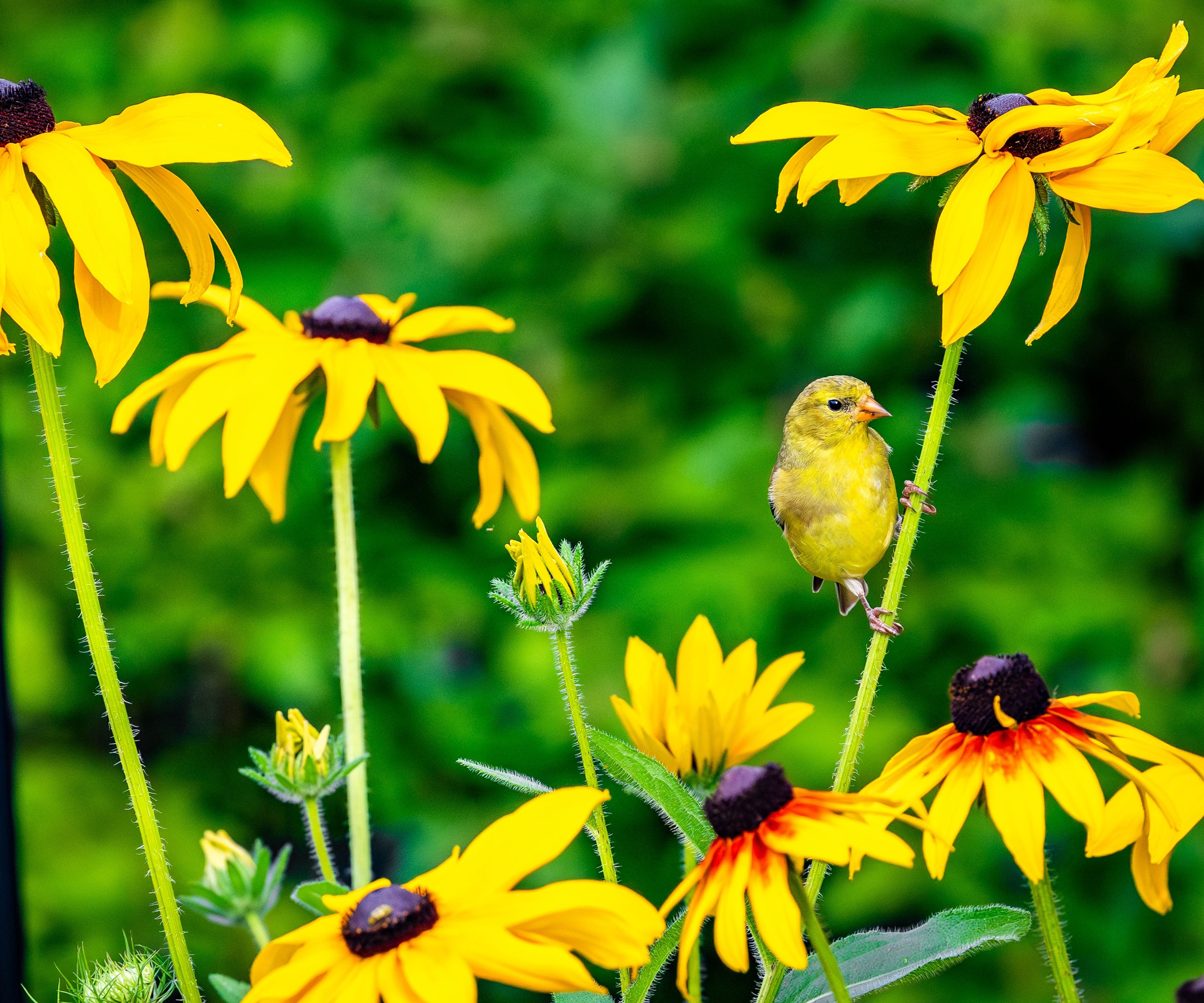
Black-eyed Susan (rudbeckia) are amongst the best flowers to plant around a bird bath. Their gorgeous yellow blooms create a mass of visual stimulation for any feathered guests that might happen by over summer. Given the profusion of petals that can develop from a typical plant, birds will be generously rewarded with oodles of seeds in the central cones of a range of rudbeckia varieties.
Even after the colors have started to fade, these seeds will continue to nourish the likes of chickadees, goldfinches and sparrows. If you’re after flowers that attract birds as a food source as well as a source of vibrant visual interest, these are a lovely addition to the area around a bird bath. Buy Rudbeckia ‘Goldsturm’ as seeds or as a plant from Burpee for a carpet of cheerful yellow blooms in full sun or partial shade.
2. Trumpet Honeysuckle Vine
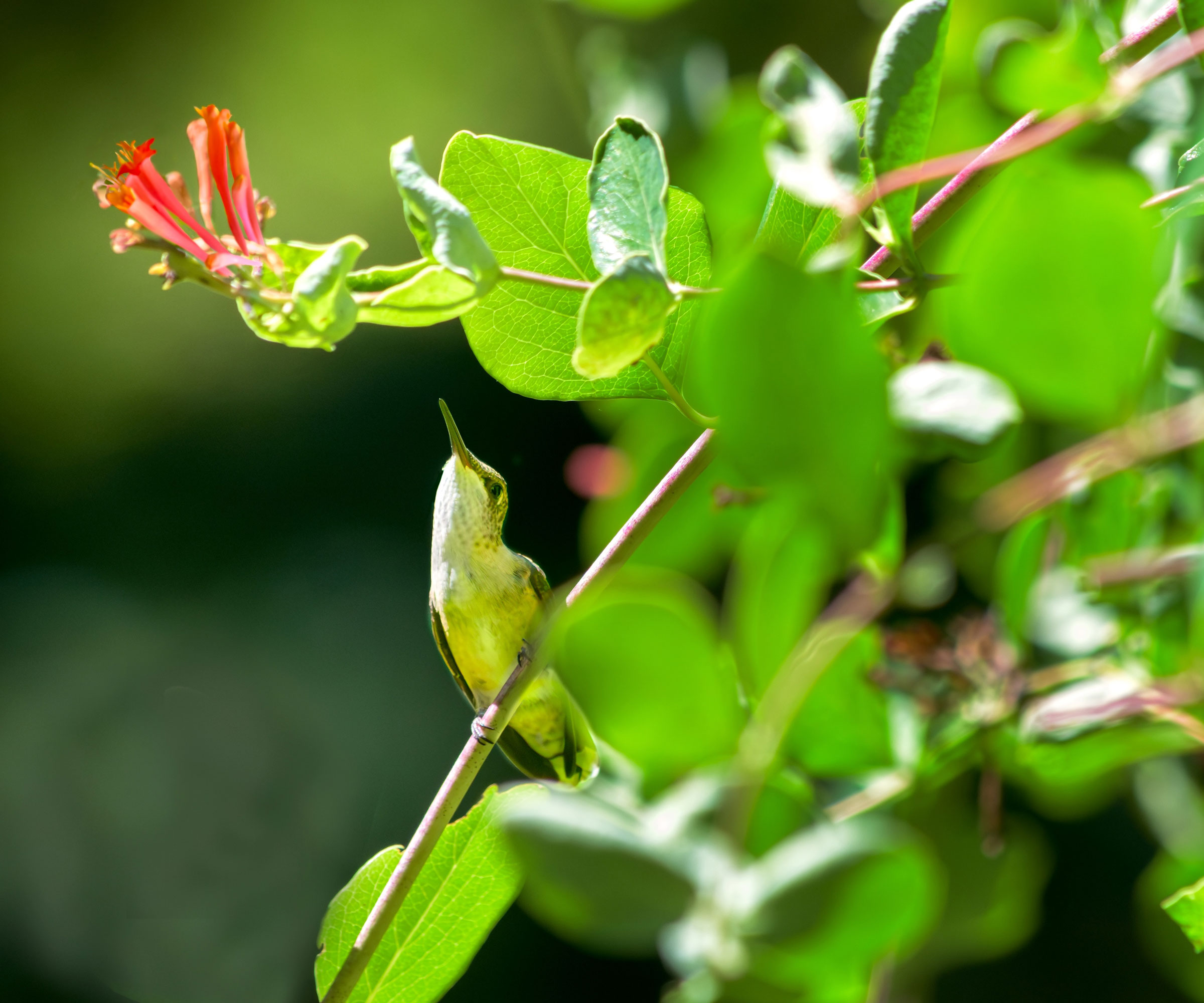
If you’re keen to charm visiting hummingbirds, trumpet honeysuckle vine is an excellent flowering plant to place near a bird bath, especially where space might be limited and you have a wall, trellis or fence nearby. Trumpet honeysuckle (Lonicera sempervirens) creates a mass of bright tubular flowers from May through summer, perfect for hummingbirds in search of a sip of nectar as well as a splash in the bath.
If you want to frame a bird bath with plants that appeal to a range of avian visitors, this pretty blooming climber will also delight purple finches and hermit thrushes, as well as robins and Baltimore orioles. Blackbirds might even nab loose bark for nests. Oh, and you’ll love this delectable honeysuckle fragrance. You can buy DAS Farms Trumpet Honeysuckle ‘Major Wheeler’ as live plants from Amazon.
3. Agastache
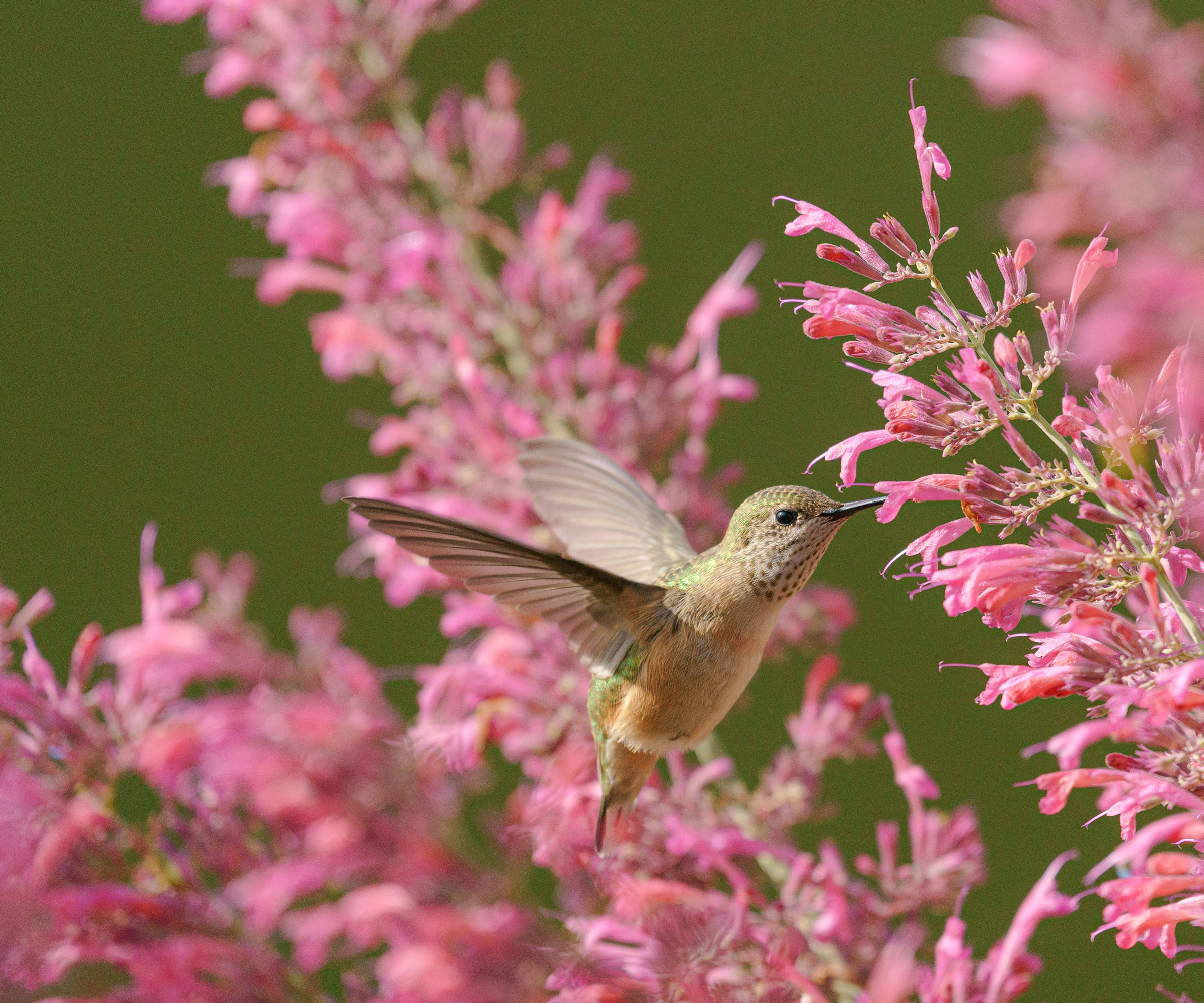
Given the fact that this plant is also known as hummingbird mint, it’s understandable that agastache often gets grown as one of the key flowers in a hummingbird garden. It’s one of the most majestic flowers to plant around a bird bath, thanks to its tall, fragrant spires of charmingly licorice-laced blooms. Depending on the variety of agastache (aka anise hyssop) that you choose to grow, you can enjoy flowers in hues of purple, pink, orange or white.
As well as delivering a sweet and tasty payload to passing hummingbirds in those nectar-packed petals, agastache’s floral spikes appeal to other birds thanks to the seeds they produce – including sparrows and finches. The distinctive scent also helps keep certain garden pests away from the bird bath. Buy Agastache ‘Pechie Keen’ by the National Plant Network from Walmart as live plants that are suitable for USDA zones 6-9 and bloom from spring to fall.
4. Virginia Creeper
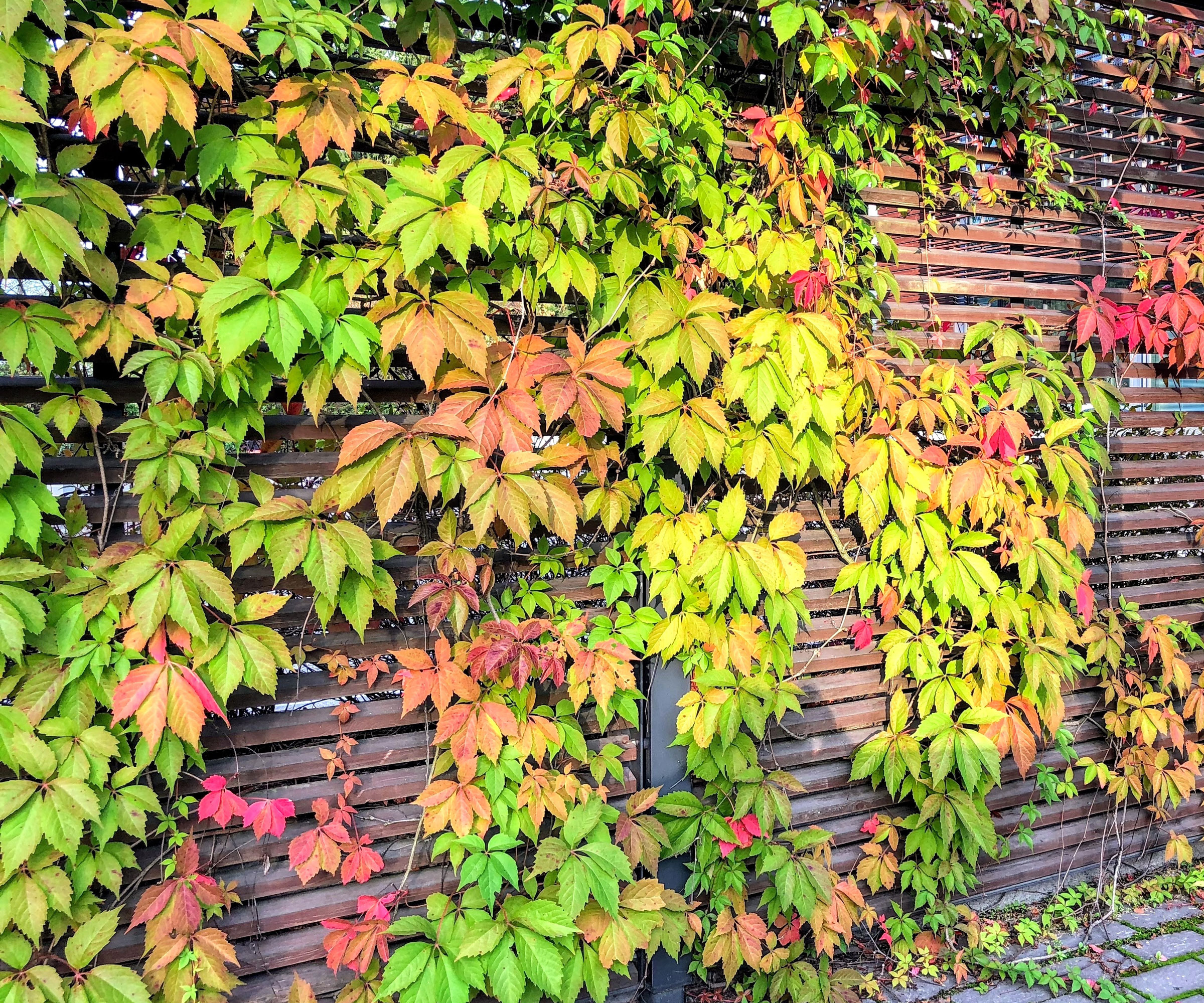
While certain other bird bath plants featured in this list hit their stride in summer, a Virginia creeper (Parthenocissus quinquefolia) is noteworthy for its vibrant fall display of crimson red hues. While it will require some support in the form of a trellis, fence or frame, it is a lovely addition to a bird bath area and can help provide visiting birds with a place to rest, as well as putting on a stunning autumnal show of color.
Best of all, its rich purple-blue bird-friendly berries are a magnet for nuthatches, bluejays, woodpeckers, eastern bluebirds, robins, chickadees, warblers and mockingbirds in the colder months. Birds also love to nestle in its generously sized canopy of leaves, as well as nibbling on the moth caterpillars that can be drawn there. Buy Virginia Creeper by CZ Grain from Walmart in groups of 5 live plants.
Sign up for the Gardening Know How newsletter today and receive a free copy of our e-book "How to Grow Delicious Tomatoes".
5. Monarda
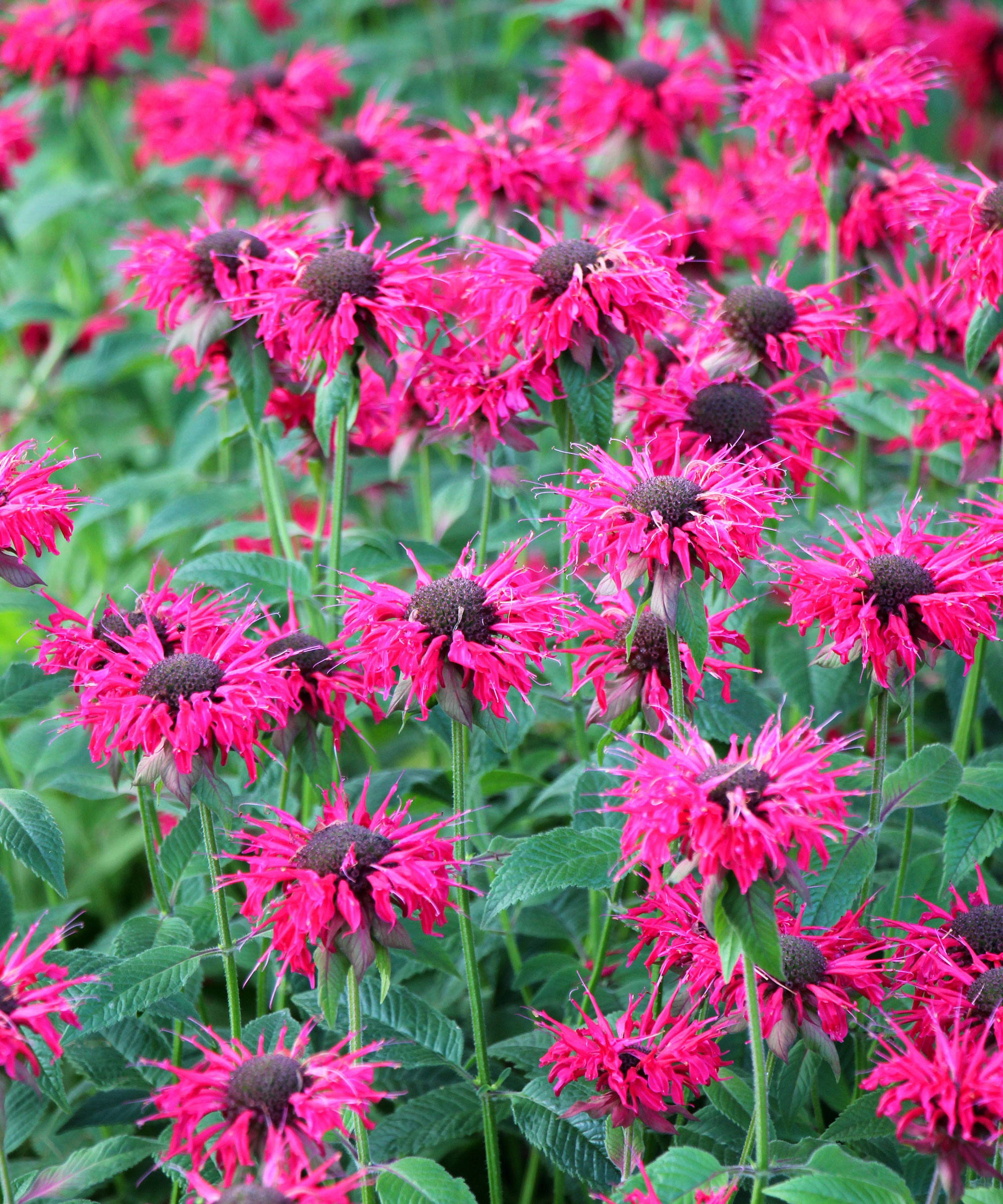
Obviously, monarda (aka bee balm) is more commonly associated with pollinators, including hummingbirds as well as the buzzing kind! But bee balm is also an excellent flowering plant to grow around a bird bath. Thanks to its profusion of scarlet, magenta, lavender and bright pink tones, its frothy flowerheads add a splash of excitement to your bathing zone – making it a hit with all kinds of birds.
Because it flowers from summer to early autumn, it’s an excellent flower to grow if you are looking to attract migratory hummingbirds. Still, once those gorgeous petals fade, it continues to service visiting birds looking for seeds to eat, and is especially moreish to goldfinches and sparrows. Buy ‘Electric Pink’ Monarda by the HostaKing Store in bundles of 3 live plants from Amazon – it’s super fragrant and easy to grow.
6. Viburnum (‘Winterthur’)

The lovely ‘Winterthur’ viburnum has some intriguing alternate names, including possumhaw and smooth witherod – but none seems to do justice to the lush pink, blue and deep purple berries typical of this fruity shrub. Bulging with berries from late summer to fall, this viburnum is a generous addition to a bird bath area for the period after high summer when many other food sources are starting to dry up. These berries are a key source of nourishment for cardinals, bluebirds, thrushes, waxwings and northern mockingbirds.
Earlier in the year, the fragrant white blooms also attract hummingbirds in April and May. Also, resting birds love its glossy leaves. ‘Winterthur’ is a moisture-lover and does well in moist soils, which is great news if your bird bath sees a lot of splashing. A great companion shrub and another great multi-season option for pink and blue berries is ‘Brandywine’, available from Proven Winners, for lush leaves that become rich red in the fall.
7. Coneflower (Echinacea)
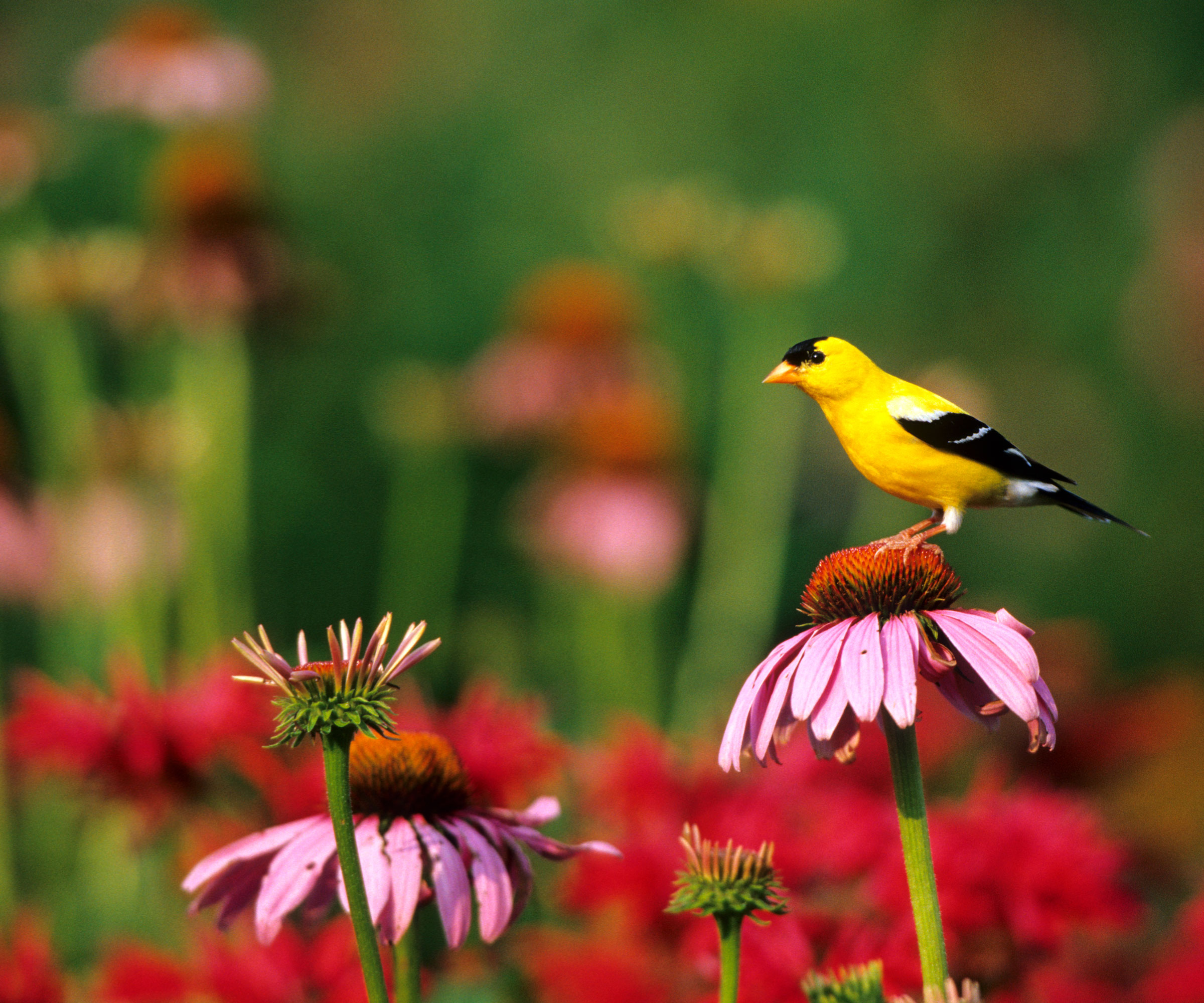
Dazzling in garden borders, cottage garden displays and meadow plantings, the rich jewel tones of coneflowers (echinacea) create a celebratory spectacle during late summer and early fall. Ranging in tone, intensity and even petal shape, from pastel pinks to flamboyant fluffy oranges, coneflowers are also an essential flower to grow if you are keen to add homegrown sources of birdseed to your garden.
These seed heads can last for weeks and are generously shaped for repeat visits. Several coneflower varieties are also a rich source of winter food for finches and other birds, and they add an interesting dimension to a winter bird bath tableau. You can grow fluffy pink Echinacea ‘Double Scoop Bubble Gum’, vibrant ‘Sombrero Baja Burgundy’ and vivid ‘Sombrera Lemon Yellow’ coneflower plants from Burpee.
8. Fountain Grass
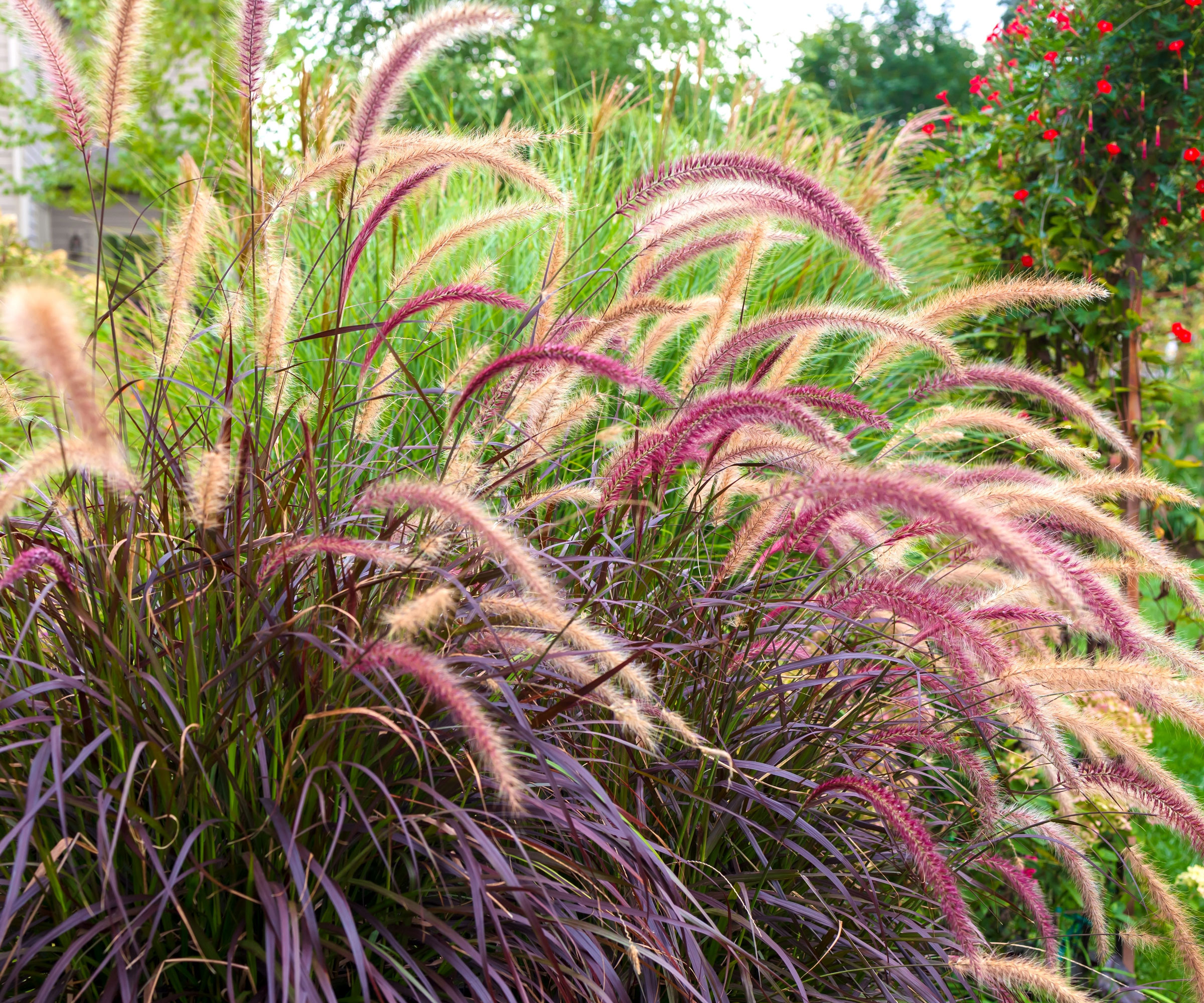
There’s something innately comforting about fountain grass, with its elegantly arching stems cloaked in delicious seeds. Not to mention the beautiful shades and tones that many fountain grass varieties lend to a secluded bathing spot. Place these plants around a bird bath, and their striking seed heads are filled with feeding opportunities for birds as the calendar tips towards fall, and beyond.
Allow the grass to stand tall around the bird bath as the garden heads into the colder months. This gives birds a well appointed place to look for insects and nesting materials in relative privacy. You can buy gorgeous Purple Fountain Grass plants in double bundles from Walmart, suitable for USDA zones 8-11, full sun and well drained soil.
9. Holly
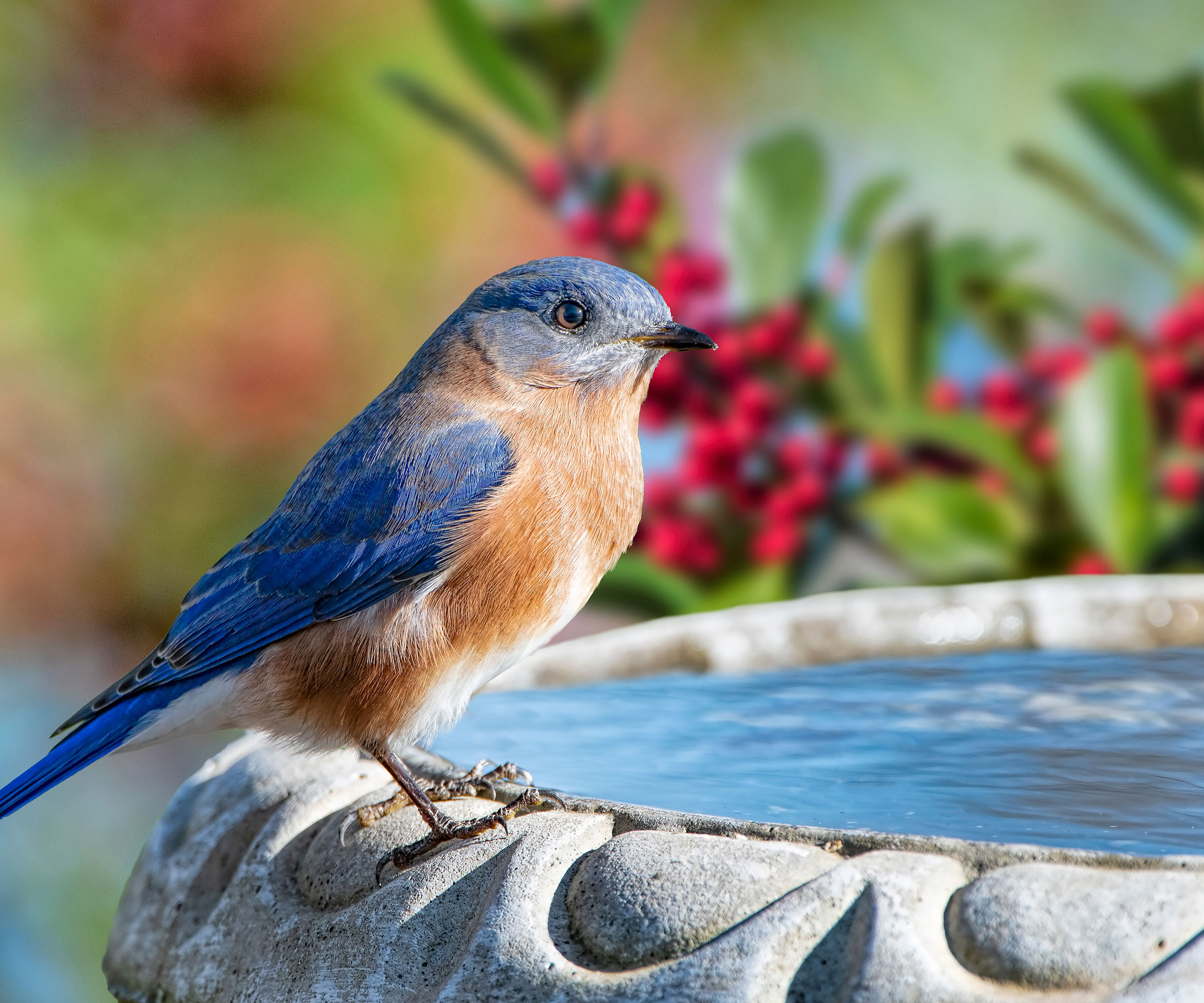
Garden birds love holly bushes for their sustenance in the form of bright red berries as other food sources start to dwindle. Varieties such as ‘Dan Fenton’, ‘Red Beauty’, ‘Satyr Hill’ and ‘Miss Helen’, grown near a bird bath, give your birdy visitors a chance to replenish at their leisure while nestled safely in the branches. Many popular holly varieties also feature pointed leaves that help keep predators at bay.
These evergreen shrubs give birds continuity as well as protection, as the leaves retain their shape year-round – so birds can be sure of privacy and safety whatever the weather. When positioning a bird bath near a holly bush or tree, just make sure you won’t be prickled when tidying up or cleaning the bath. Buy pretty ‘Burford’ Holly (Burfordii) from Amazon as live plants for year-round charm.
Interested in more ideas for bird-friendly gardening and expert advice delivered straight to your inbox? Sign up for the free Gardening Know How Newsletter!

Janey is a former assistant editor of the UK’s oldest gardening magazine, Amateur Gardening, where she worked for five years. For the last few years, she has also been writing and editing content for digital gardening brands GardeningEtc and Homes & Gardens. She’s taken part in a range of conservation and rewilding projects for the Royal Horticultural Society (RHS) and the British Trust for Conservation Volunteers (BTCV) as a way of exploring her horticultural horizons. She is currently undertaking her RHS Level 2 certificate in The Principles of Plant Growth and Development.